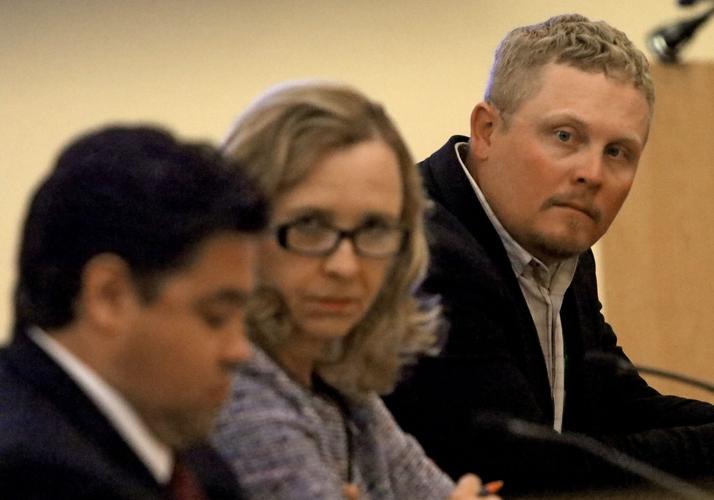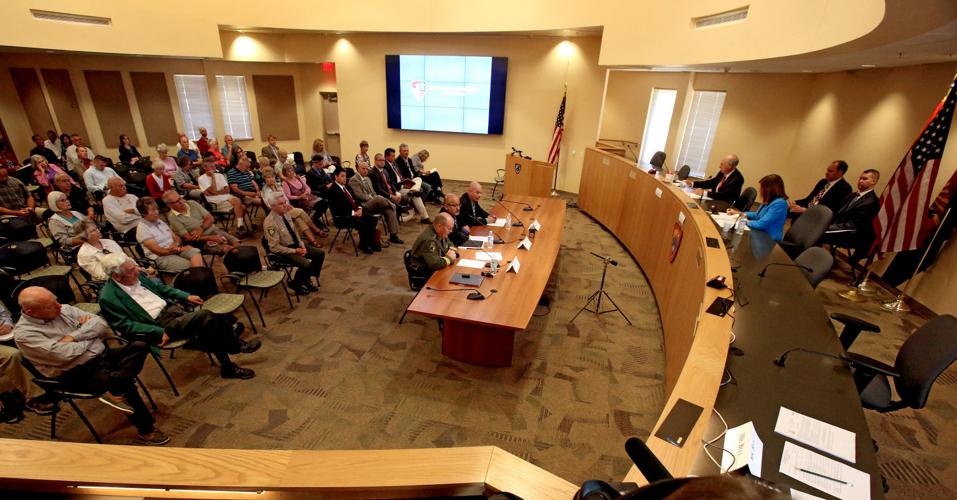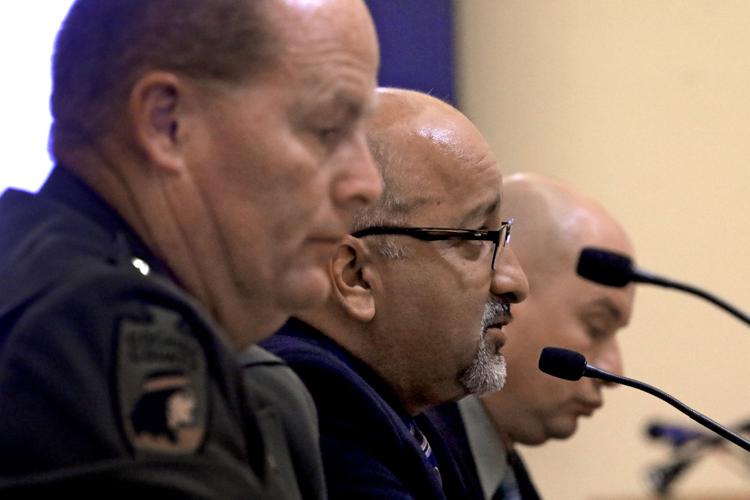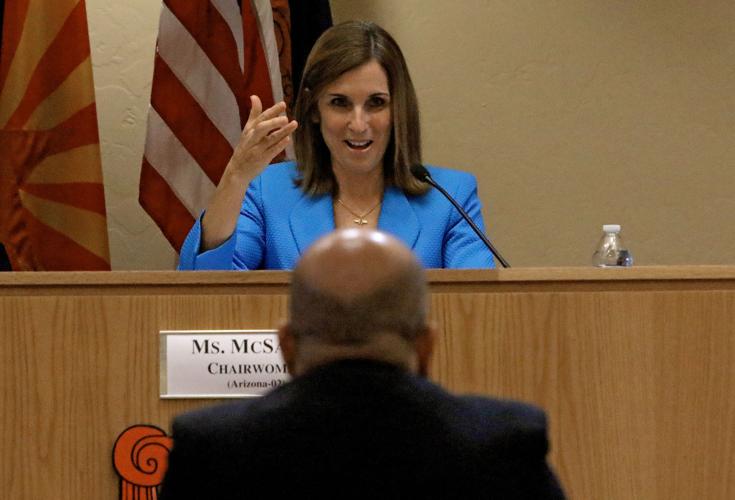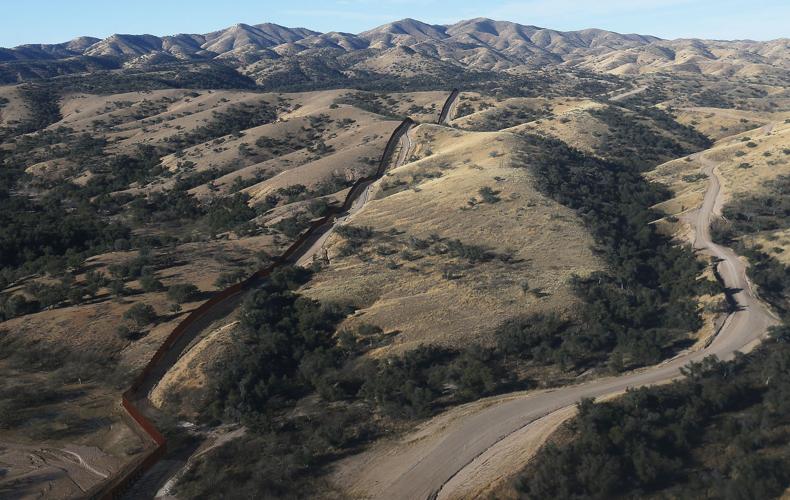SAHUARITA — Discussions about border issues often focus on the differences, but on Monday the goal was to find common ground.
A group of Southern Arizona residents, city officials, ranchers, business owners and law enforcement officers gathered here for a congressional field hearing, “Life on the Border: Examining Border Security through the Eyes of Local Residents and Law Enforcement,” held by U.S. Rep. Martha McSally of Arizona and New Mexico Rep. Steve Pearce, both Republicans.
“I want to make sure as decision makers, policy makers, those that are running for office are trying to come up with ways to address these things now and in the future, that they are hearing from facts, hearing from people on the ground that are being impacted by failed policies every day,” said McSally, who chairs the House subcommittee on Border and Maritime Security.
Although the number of people coming illegally through Southern Arizona is down, ranchers in rural areas continue to see traffic coming through their land. Instead of seeing large groups of migrants looking for work, they said, they now encounter smaller groups carrying drugs.
“I can remember a time in 1999 I saw two different groups of people crossing the ranch that numbered larger than 100,” Frank Krentz said. “We used to approach these people as Christians to make sure there were no injuries and tell them that Border Patrol would be here shortly to help them.”
But that all changed after his father, Robert Krentz, was shot and killed nearly six years ago when he was out on his ranch and saw someone walking across a pasture. “Now we don’t go near these people. Not knowing what the situation holds, we don’t put ourselves in a position that would get us into trouble.” The slaying remains unsolved.
Just last week, said Daniel Bell, president of the ZZ Cattle Corp., there was a fire started by people crossing illegally who were later caught by the Border Patrol.
“These were all breaking points that caused ranchers on the border to demand more boots on the ground,” he said.
While the focus of the hearing was border security, McSally said it was as important to include the perspectives of business owners and city residents.
“As we are trying to keep those who are trying to do us harm out, we’ve got to make sure that we are having a free flow of commerce and traffic that’s legitimate for trade opportunities for growing our economy. We can do both really well with the right strategy, technology and right input from those being impacted,” she said.
“I understand the need for more security away from the ports of entry, but we cannot let that affect the legal crossing of goods and people,” said Douglas Mayor Danny Ortega. “As I have often heard, we need high fences and wider gates; we also need to talk about making it more efficient and easier to trade goods and services with Mexico.”
“I am a big proponent of efforts and initiatives to promote trade and tourism in Southern Arizona for the benefit of my state and my country. I am also an ardent proponent of enhanced security at our borders rural areas as well as at our border ports of entry,” said Jaime Chamberlain, president of JC Distributing Inc. in Nogales.
“The more effective and efficient that our enforcement agencies are at the border, the faster our produce, our manufactured goods, our cattle, our mining equipment and our Mexican consumers can cross the border,” he said.
And everyone agreed there’s a need to address the legal immigration system to meet current demands.
“If we take folks who are coming for economic reasons and we provide for safe and efficient ways for folks to come through the ports of entries, it’s a lot easier for law enforcement,” said Mark Adams, coordinator of Frontera de Cristo in Douglas.
“Revamping and modernizing the legal immigration system is something I think it’s important and should go hand in hand with increasing border security because those are really the root issues of why we are in the situation we are in today,” McSally said.
The Border Patrol is about 5,000 agents short of what it needs to effectively control the border, according to Art del Cueto, president of the local Border Patrol union.
Technology and better access has made a difference, said Bell, whose ranch shares 10 miles with the Mexican border, of which 2 miles have a tall pedestrian fence and the rest is barbed wire. The government recently completed a 2-mile road project. “We need to keep that progress and keep it going,” he said.
And in some places, there’s still a need for a fence, McSally said.
“Sometimes terrain doesn’t allow it because it’s so rough, but where the terrain does allow it and where we can be good stewards of resources, there are still some places where physical barriers should be put up,” she said.
“But a barrier in and of itself is not going to secure the border,” she said.
While del Cueto said checkpoints and the so-called defense-in-depth strategy are still needed, border residents and business owners said they would like agents to patrol closer to the border, and they expressed concerns with the economic impacts, civil rights violations and that checkpoints shift traffic to the rural areas.
Even if there was no agreement on this, McSally said it was good to listen to the different perspectives.
Cochise County Sheriff Mark Dannels and Nan Stockholm-Walden with Farmers Investment Co. and The Green Valley Pecan company also testified.


